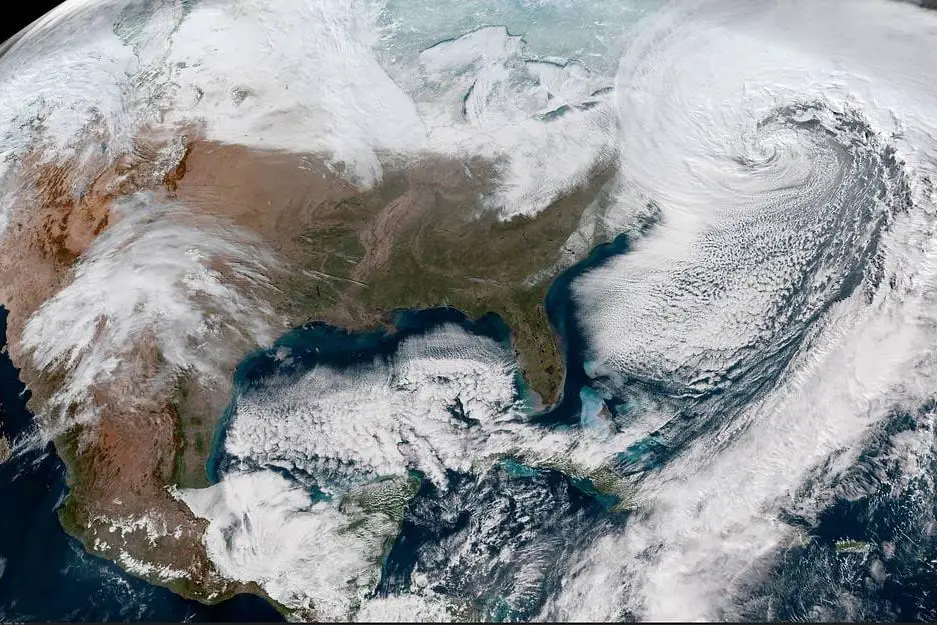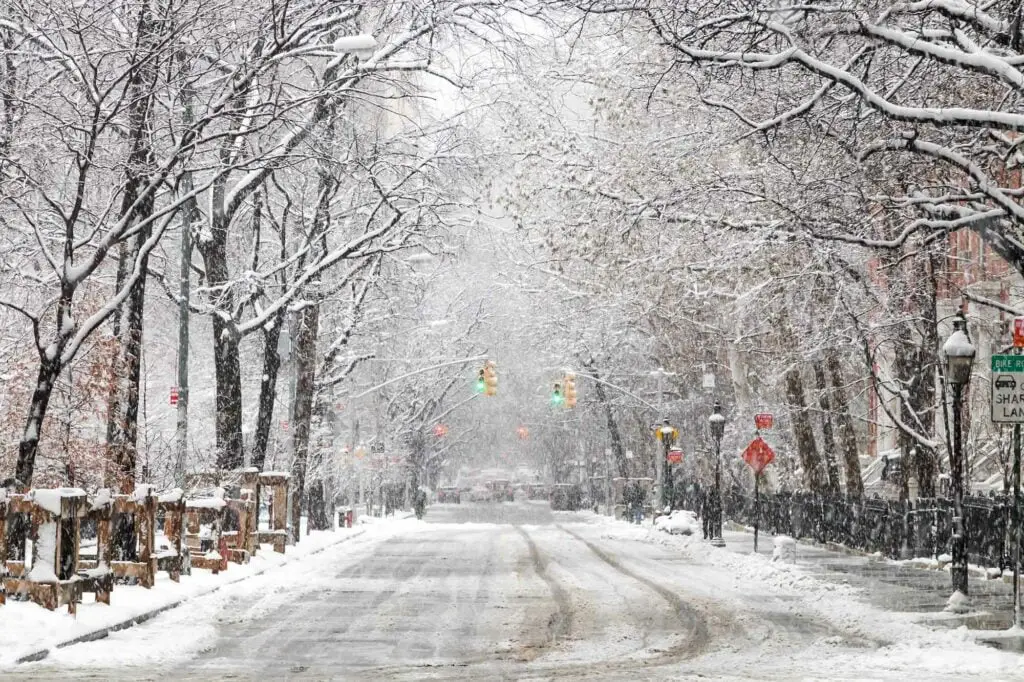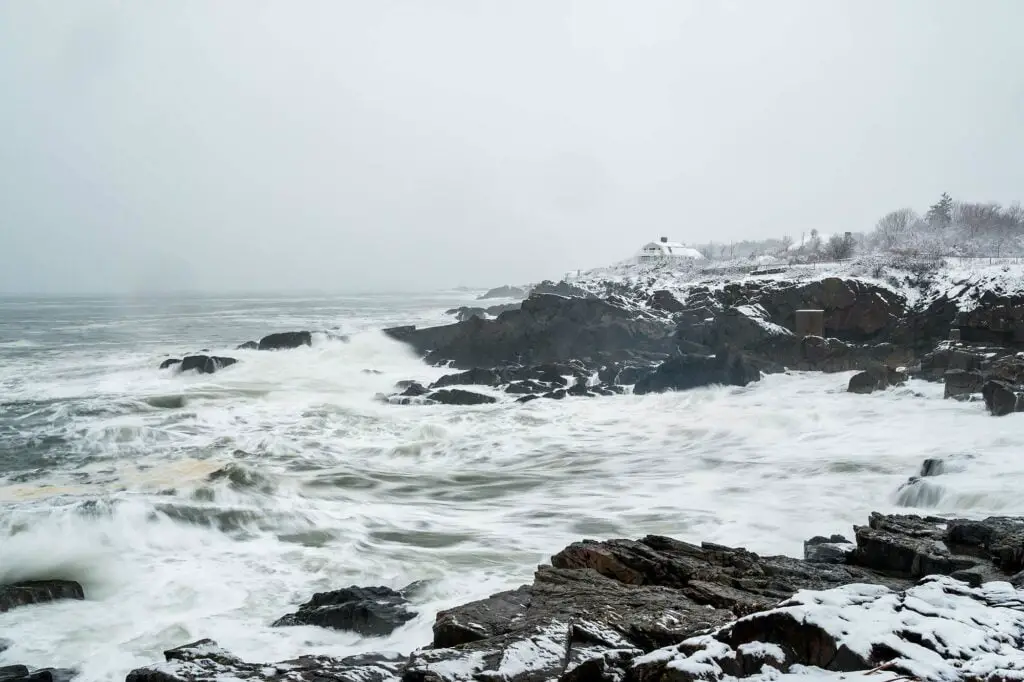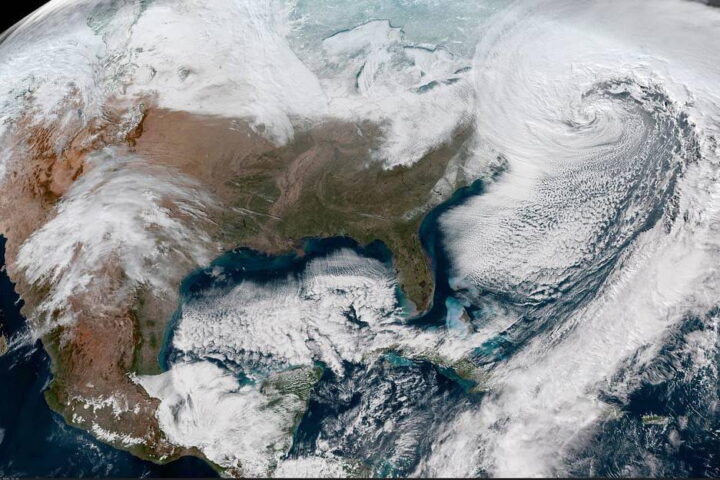Nor’easters are intense periods of snow and high wind that can last for days. While the term is most commonly associated with coastal storms that pass by the Northeastern US’ major cities, the term is used elsewhere, such as in Europe.
A nor’easter is a storm with intense northeast winds. The term “nor’easter” comes from the winds that accompany these storms at their worst, although some claim it to be a literary tool of 19th Century newspaper writers. In the northwest “quadrant” of a low-pressure system, your winds will blow from the northeast. The most intense weather is also in this northwest quadrant.
Nor’easters are most common in the fall and winter, although they can happen at any time of year. Depending on their severity, the National Weather Service may issue a Winter Storm Warning or Blizzard Warning for those in its path.

What is a nor’easter?
Nor’easters originate from a rapidly strengthening low-pressure system that moves north or northeast along the East Coast of North America during autumn or winter. They either stay offshore along their journey, move along the coast, or just inland.
Sometimes, nor’easters develop from tropical cyclones that lose their tropical characteristics: Hurricane Sandy transitioned to an extratropical low-pressure system shortly before striking New Jersey with hurricane-force winds. Well inland across western PA and the Ohio Valley, snow fell.
Most nor’easters, however, happen in the winter. As such, frigid temperatures, strong winds, and heavy snow are all the most common weather hazards those in the path of a nor’easter might have to deal with.
The track plays a big part in who sees snow during wintertime nor’easters. In general, the low pressure system will track about 100 miles east or west of the East Coast of the United States.
For significant effects in Northeastern US and the Mid-Atlantic states, a northeastern offshore track that passes near 40N latitude and 70W longitude is the best track, or “benchmark,” as meteorologists call it. This keeps the nor’easter over the Gulf Stream, a current of warm water that runs essentially parallel to the United States East Coast.
If it passes west, there is typically more rain than snow in the big cities such as Washington, D.C., Philadelphia, New York, and Boston. If it passes too far to the east, the heavy snow (if any) is limited to coastal areas.
These storms tend to have powerful winds that can gust up to 70 miles per hour (110 km/h), creating blizzard conditions in areas where snow is falling and sometimes severe damage, bringing down power lines. They also cause coastal flooding and very rough seas, and severe beach erosion. Heavy rain, thunderstorms, and even tornado outbreaks can occur in the storm’s warm sector (to its southeast).
Where Nor’easters Happen and How They Form

Nor’easters tend to form near the East Coast of the United States and southward. They also happen in Europe, but not as often.
They are most likely to occur between September and April—peak season is January through March on both sides of the ocean. In this area, cold air from Canada clashes with warm Atlantic Ocean waters, creating a perfect environment for these storms to form.
The first step is the collision of cold air from Canada and warm Atlantic waters, creating low pressure near the ocean surface. Warm moist air at high levels then moves into this low-pressure system, causing it to strengthen rapidly as more moisture enters its atmosphere. This causes “cyclogenesis,” the development of a low-pressure system with a counterclockwise flow around its center.
Notable Nor’easters
The 1993 “Storm of the Century” was one of the deadliest and most destructive nor’easters ever to hit North America. It killed nearly 300 people across North America, dropped up to three feet (one meter) of snow in some places, and caused $12 billion in damage. Cities set single-storm snowfall records as far south as Georgia, and severe weather and tornadoes rocked Florida.
The Blizzard of 1996 was another destructive nor’easter that hit the east coast in January. It dropped heavy snow, injured over 100 people, and caused around $500 million in damage.
The most notable nor’easter is Winter Storm Jonas (2016-2017). This massive storm brought blizzard conditions to the northeastern United States and southeastern Canada. Winter Storm Jonas killed 45 people across seven states, dropped up to two feet of snow in some places, and caused nearly $500 million worth of damage.
Further back in time, the Blizzard of 1888 is probably one of the most famous nor’easters. The storm paralyzed the East Coast from the Chesapeake Bay northward into the Canadian Atlantic, with as much as 58 inches (nearly six feet) of snow falling in parts of New Jersey, New York, Massachusetts, Rhode Island, and Connecticut.
Nor’easter Safety Tips

Whether you’re heading out to brave the elements or are stuck at home, it’s essential to know how to stay safe during snowstorms. Here are some tips for staying warm and avoiding potentially dangerous situations.
- If you have a car, keep your gas tank full – that way, if the roads get too bad, you can still get to work.
- If you don’t need to go outside, stay inside – staying warm is the best way to avoid hypothermia and frostbite.
- Pack an emergency kit in case of power outages or car trouble — it should include non-perishable food items, water bottles, a flashlight with extra batteries, first aid supplies, and other necessities.
- If you need to go outside, wear multiple layers of clothing — it’s better to be too bundled up than underdressed when the wind chill is below zero.
- Avoid walking on ice if possible – not only can you slip and fall, but winter boots are designed for fashion over function in icy conditions.
- Avoid driving on snow-covered roads whenever possible – you should only drive if necessary, and it’s safer to stay at home than risk crashing into another car or sliding off the road.
- If your power goes out during a winter storm, turn off all appliances that might cause a power surge when they come back on.
We recommend purchasing a weather radio to stay on top of the latest watches and warnings when a nor’easter threatens. And the Northeast United States isn’t the only area struck by powerful winter storms: winter storms and blizzards are common just about anywhere in the United States that sees snow.



